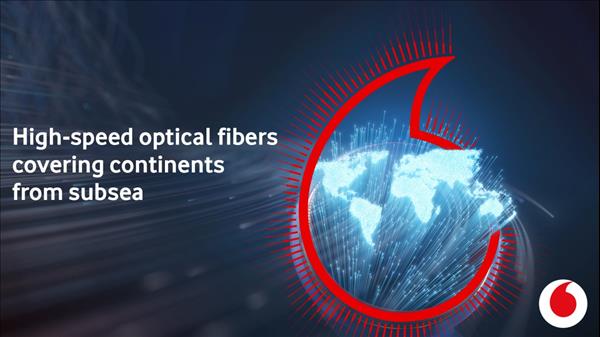
Qatar becoming a global connectivity hub: Vodafone
Doha: In 2021, we are all accustomed to high-speed internet connectivity. Within seconds, a slow internet browser can turn anticipation into frustration. We roll our eyes and give it another moment or two before abandoning our visit to the site altogether, looking for a quicker path to the desired information.
We might be more forgiving if we were operating from a basement or a remote island, but generally high-speed internet is seen as a commodity and is expected from service providers.
Yet, there are few questions as elusive as: Where does our internet come from? How does it connect us to the world in a moment's notice?
The answer lies deep beneath sea level. Submarine cable systems, embedded across our oceans and seas, connect continents and make fast digital data transfer possible. Using optical fibre technology, they carry telephone, internet and private data traffic across the globe. All we have to do is open our favourite digital device.
For Qatar and the wider region, the need for reliable internet connectivity and a rapidly growing infrastructure has driven the regional deployment of robust submarine cable networks.
Vodafone Qatar has been a partner to Gulf Bridge International (GBI) since 2011, a global cloud, connectivity and content enabler, to connect us to other GCC nations, Europe, and Asia–Pacific, underpinned by their fully owned and operated submarine cable network. Over 390 subsea cables currently carry 99 percent of data traffic that is crossing our oceans. They are more reliable and can deliver far greater data capacity than satellites.
In the Mena region, more than 30 cables connect us to the world, fulfilling an expanding flow of cross-border data. GBI's Smart Network alone spans 40,000 km and can address more than 2 billion users globally and is among the most connected in the region. Apart from lending us a seamless browsing, streaming and information-sharing experience, Vodafone's enhanced connectivity supported by subsea cables is crucial to economic development within a modern digital society. The role these technologies play in empowering digital economies cannot be understated. When we look around, words like 5G, cloud computing and fibre network grace billboards and imply a promise of speed, connectivity and innovation – and year after year, we demand quicker, more responsive technologies to power our businesses and everyday lives.
Subsea connectivity and cable systems are the backbone to Vodafone Qatar's internet network, and are now becoming the enablers of business-critical services.
For much of the world – and the Middle East is no exception – trade and business largely happens online. The shift to remote work and corporate digital transformation ambitions has greatly accelerated this trend, in addition to work-from-home requirements and remote learning. The key requirement for these developments is high-speed internet connectivity.
As part of the bigger economic picture, mobile technologies and services accounted for $244bn of the Mena region's GDP in 2019, or 5.7 percent.
Moreover, the region's mobile industry has supported almost one million jobs and contributed to the funding of the public sector. In the decade to come, the global footprint of submarine fibre networks is expected to grow, which underscores the vital role of subsea cables in global communications.
But what will the future of our internet look like?
An estimate from the World Economic Forum puts the potential value associated with the digitalisation of society and industry at over $100 trillion worldwide in 2025.
Vodafone Qatar is keeping its eye on the continued evolution, primarily around automation, intelligence and efficiency. The subsea cable networks that integrate Qatar with the global digital economy today, also lays the foundation for continued growth via global trade and investment, local startups, and an influx of international companies looking to set up business in Qatar.
Already a key commercial and financial hub, with developments like the Qatar Internet Exchange Point (QIXP), Qatar is also becoming a global connectivity hub, driven by the state-of-the-art communications infrastructure that emerges from our oceans at the click of a button.

Legal Disclaimer:
MENAFN provides the information “as is” without warranty of any kind. We do not accept any responsibility or liability for the accuracy, content, images, videos, licenses, completeness, legality, or reliability of the information contained in this article. If you have any complaints or copyright issues related to this article, kindly contact the provider above.






















Comments
No comment